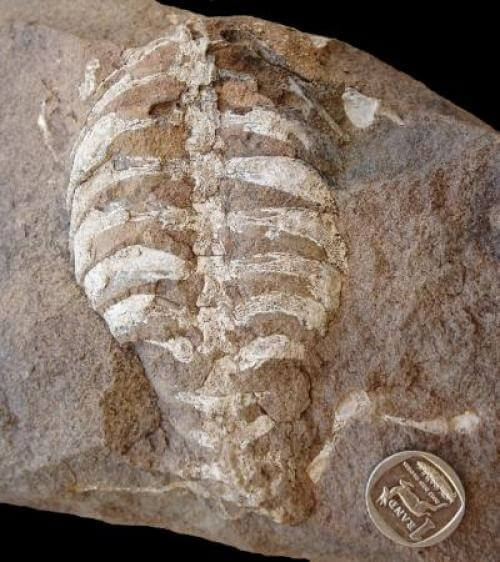Fossils of an extinct South African reptile provide clues to the evolution of this interesting feature

A careful study of an ancient ancestor of modern turtles has allowed researchers to get a clearer picture of how the turtle shell, one of nature's strangest protective coverings, was formed. The findings, published in the May 30, 2013 issue of the journal Current Biology, helped fill a gap of 55-30 million years in the turtle fossil record, through the study of an extinct South African reptile known as Eunotosaurus.
"The turtle shell is a complex structure whose initial change occurred over 260 million years ago during the Permian period." Says Tyler Leeson of Yale University and the Smithsonian Museum, "Like other complex structures, armor evolved over millions of years and gradually changed into its current form."
The turtle shell is not really one unit, it is made up of about 50 bones. Turtles are the only animals that form a shell using a combination of ribs and vertebrae. In all other animals, the outer shells are formed from external bony scales, and are not connected to bones.
"In my opinion, the reason why other animals do not create such shells by expanding and suturing the ribs is that the ribs of mammals and lizards are used to ventilate the lungs." Says Leeson, "If you connect your ribs and make them a protective shell, then you have to find a new way to breathe!" This is exactly what the turtles did, with the help of a muscular sling.
Until recently, the oldest known fossil turtles were dated to a period beginning about 215 million years ago, and which already had full armor, which makes it difficult to see the sequence of evolutionary events that created them. This changed in 2008 with the discovery of the reptile fossils Odontochelys semitestacea in China that lived about 220 million years ago and had a developed armor on the side of the abdomen, but only partial armor on the back.
The Eunotosaurus that was discovered as mentioned in South Africa, dates the turtle and its shell 40 million years before the previously established dating, it had nine elongated ribs that are only found in turtles, and like the turtles, it lacked the intercostal muscles. But Eunotosaurus lacked other features shared by Odontochelys and turtles, such as broad spines on their vertebrae.
Leeson says he and his colleagues plan to investigate various other aspects of the turtles' respiratory system, which allows them to operate with locked ribs attached to the outer protective shell. "It is clear that this innovative lung ventilation mechanism evolved at the same time as the origin of the turtle shell." He says.

7 תגובות
Ariel, I think you didn't understand his question, he wanted to understand what suddenly caused the need for the turtle to change its armor in such a short time? If for 215 million years the armor met his needs, what suddenly changed that caused the rapid change?
Moshe:
If I understand your disbelief correctly then the answer is very simple.
For 215 million years the turtle's armor did not change because there was no need for change. This armor was so evolutionary successful that it remained intact for 215 million years.
The fixation of an evolutionary change stems first of all from its success (effectiveness).
My father - where did Moshe get it from? "They were dated to a period beginning about 215 million years ago, and which already had full armor, which makes it difficult to see the sequence of evolutionary events that created them. This changed in 2008 with the discovery of the reptile fossils Odontochelys semitestacea in China that lived about 220 million years ago and had developed armor on the side of the abdomen, but only partial armor on the back." 220 minus 215 is five. That's where he got it from...
I arranged the armor for them!
Where did Moshe get this figure of 5 million?
Yeah, sure.
For 215 million years nothing has changed in the turtle's shell, but within 5 million years the turtle has built itself a home.
Kwabanga!!!